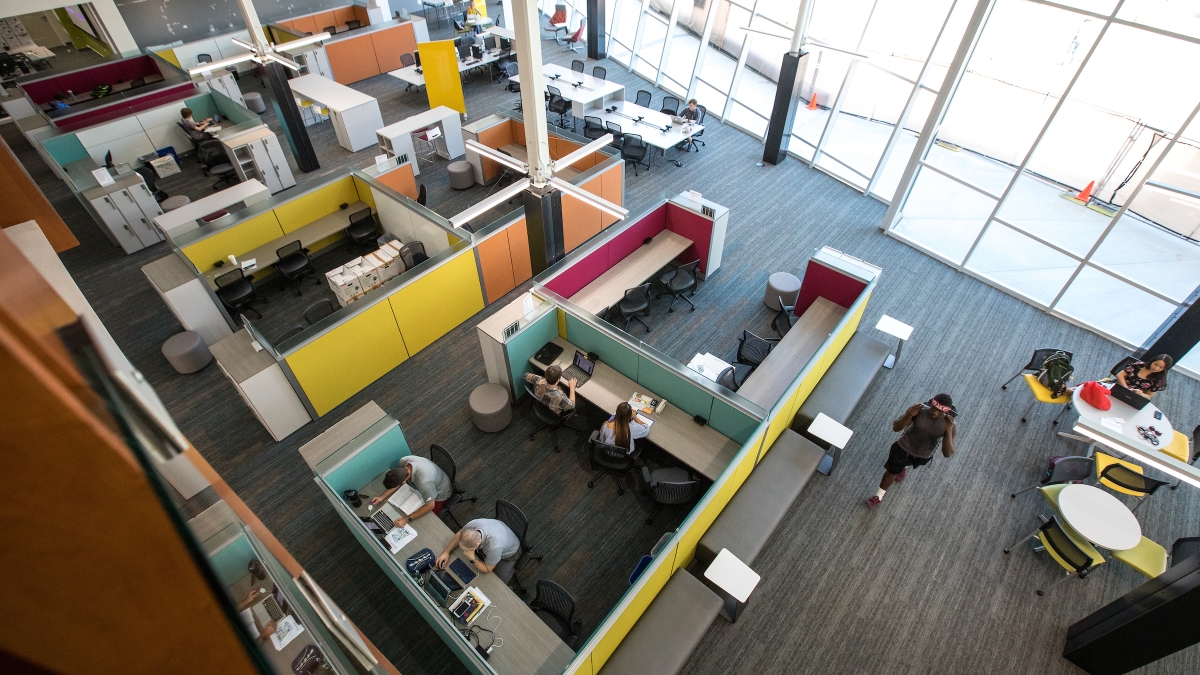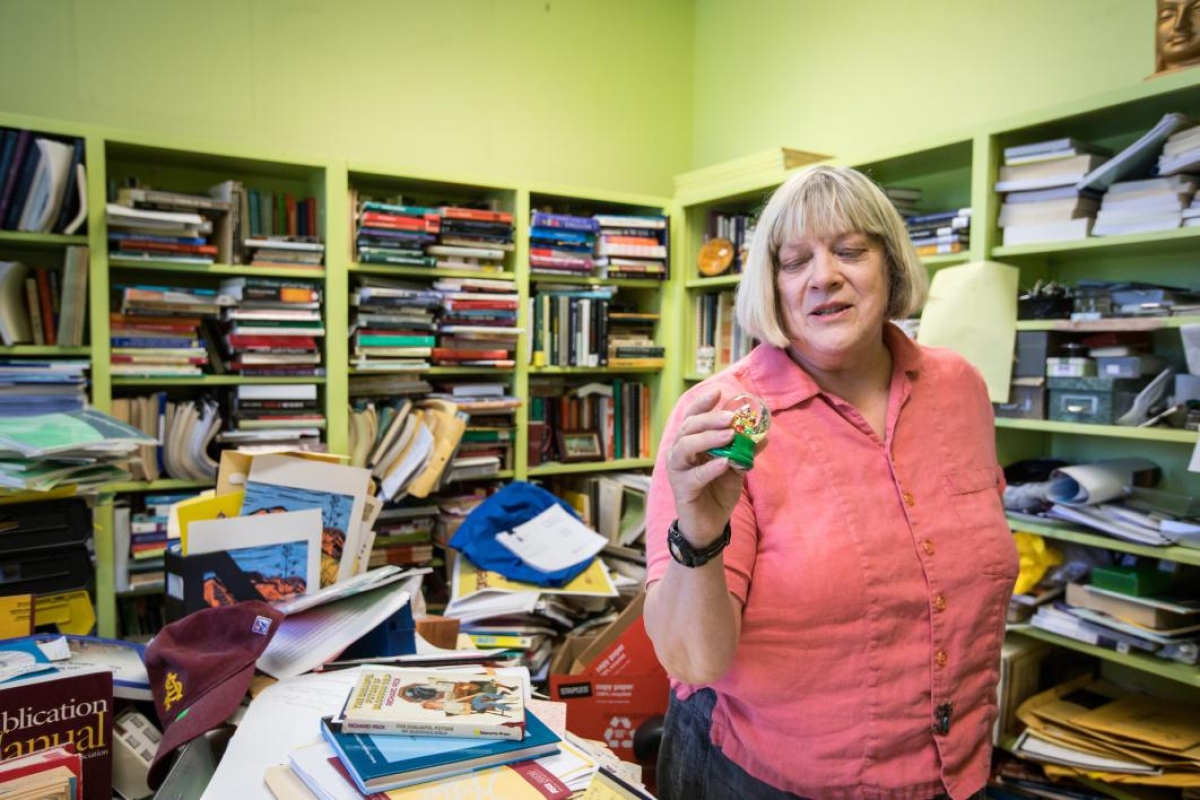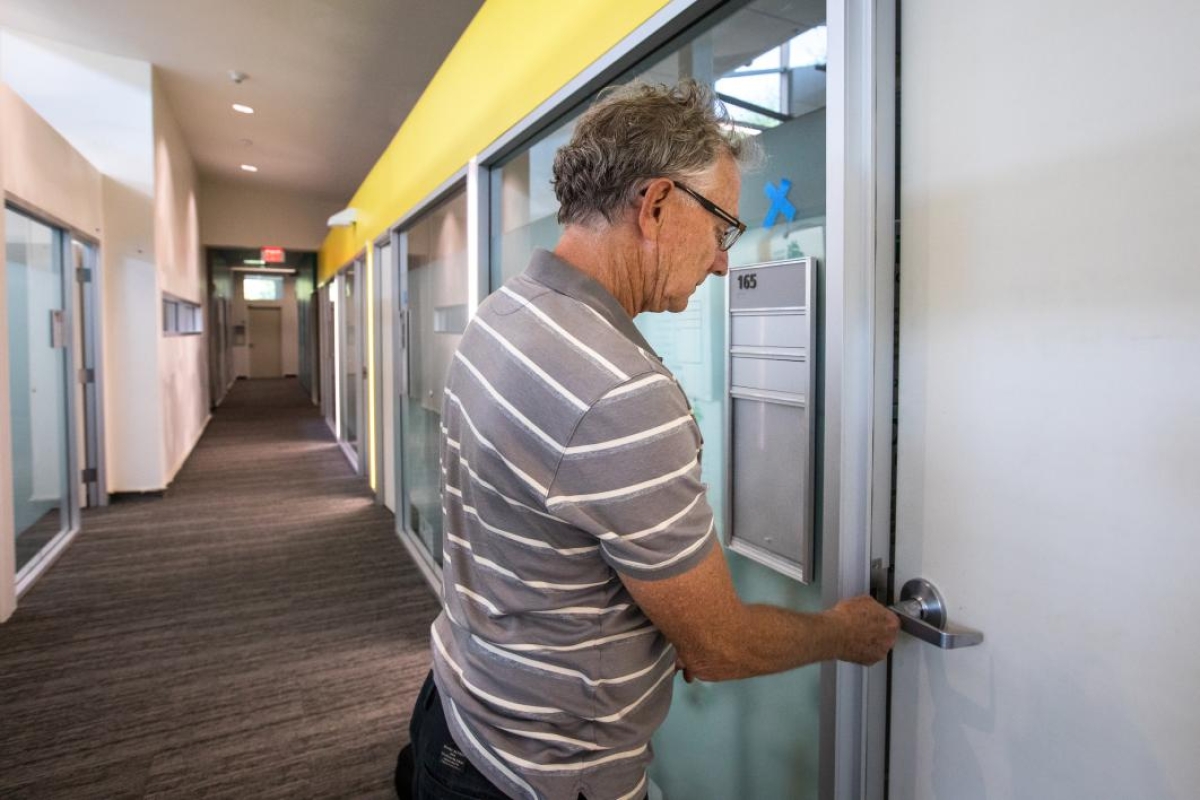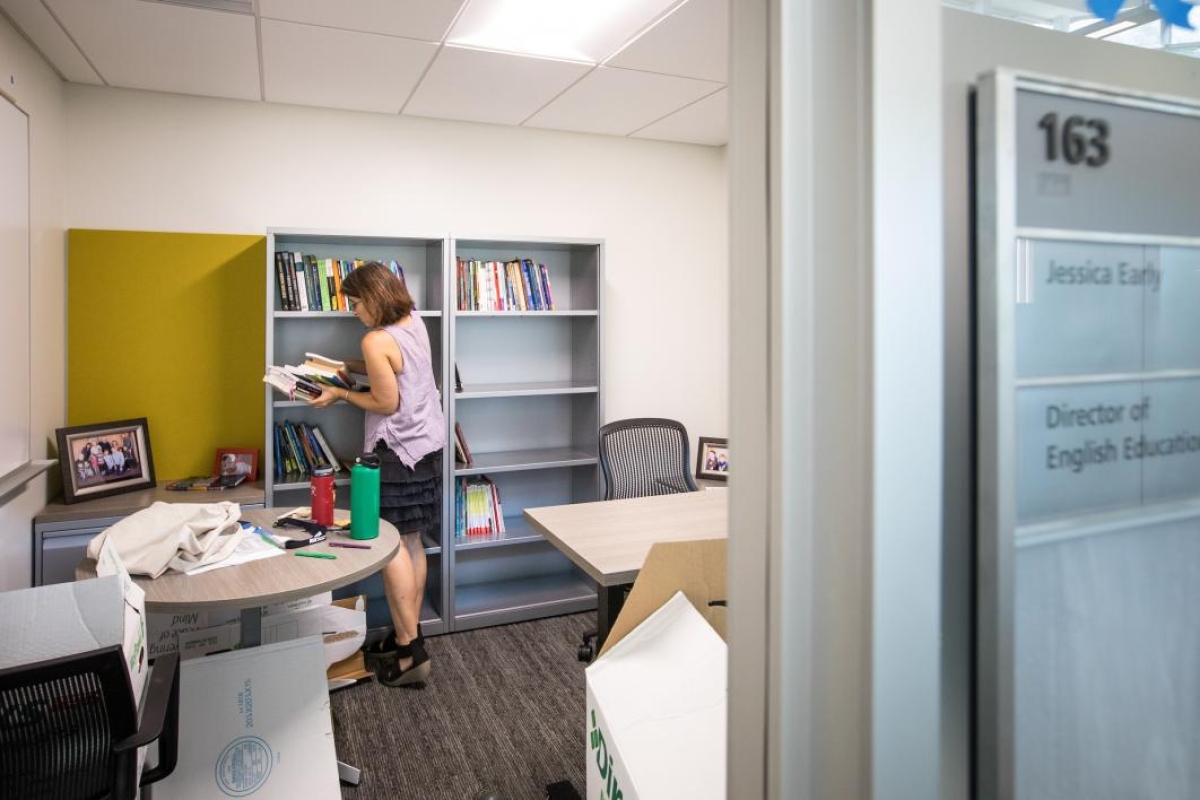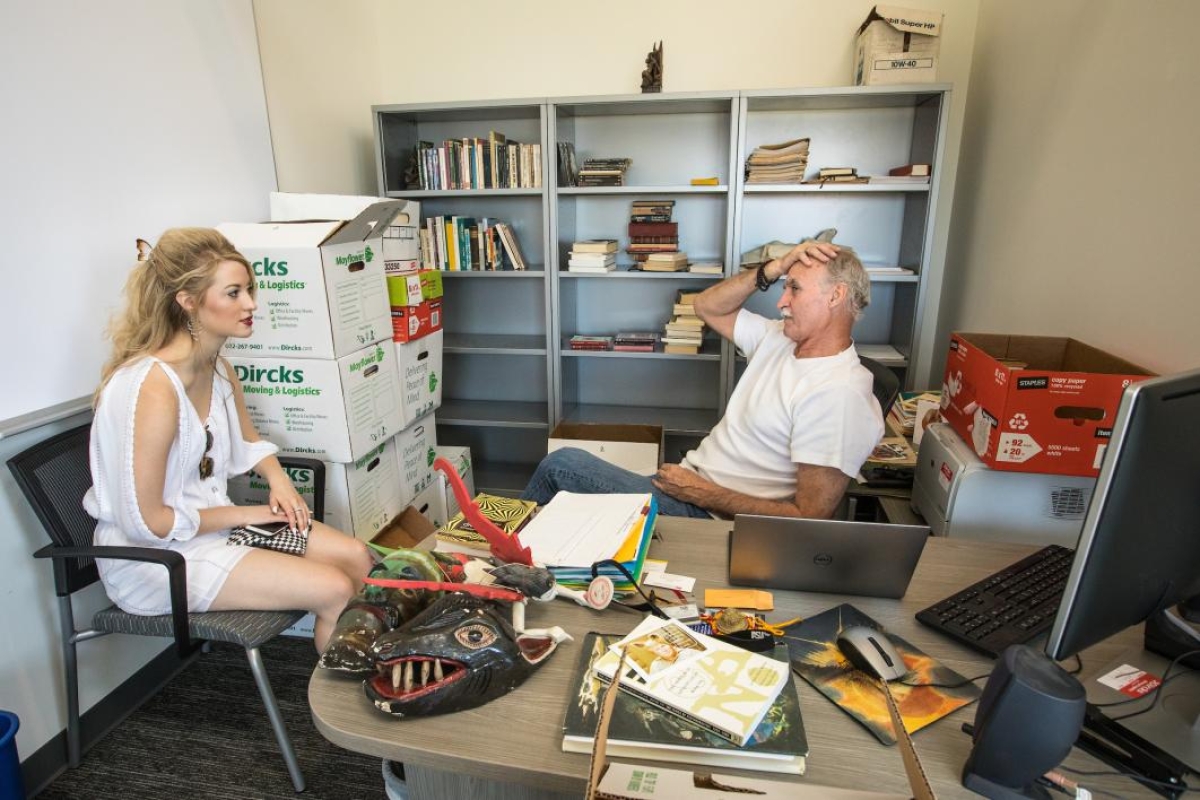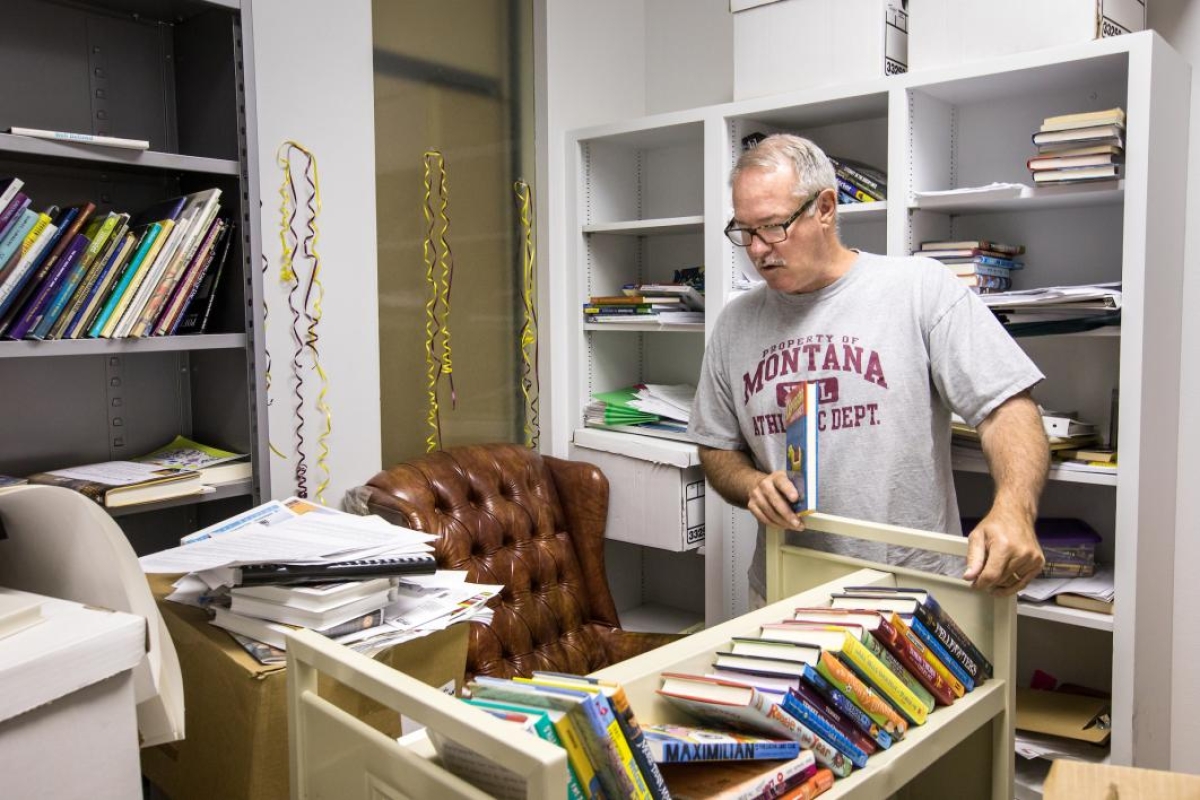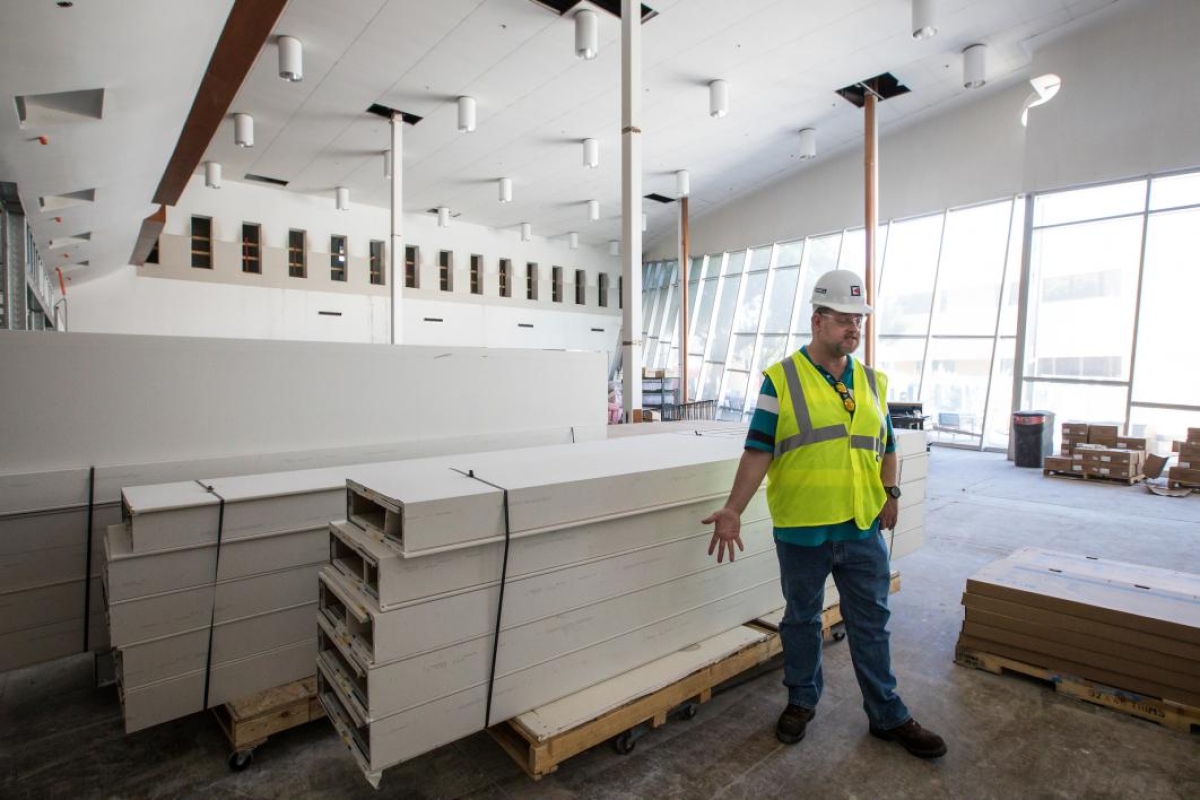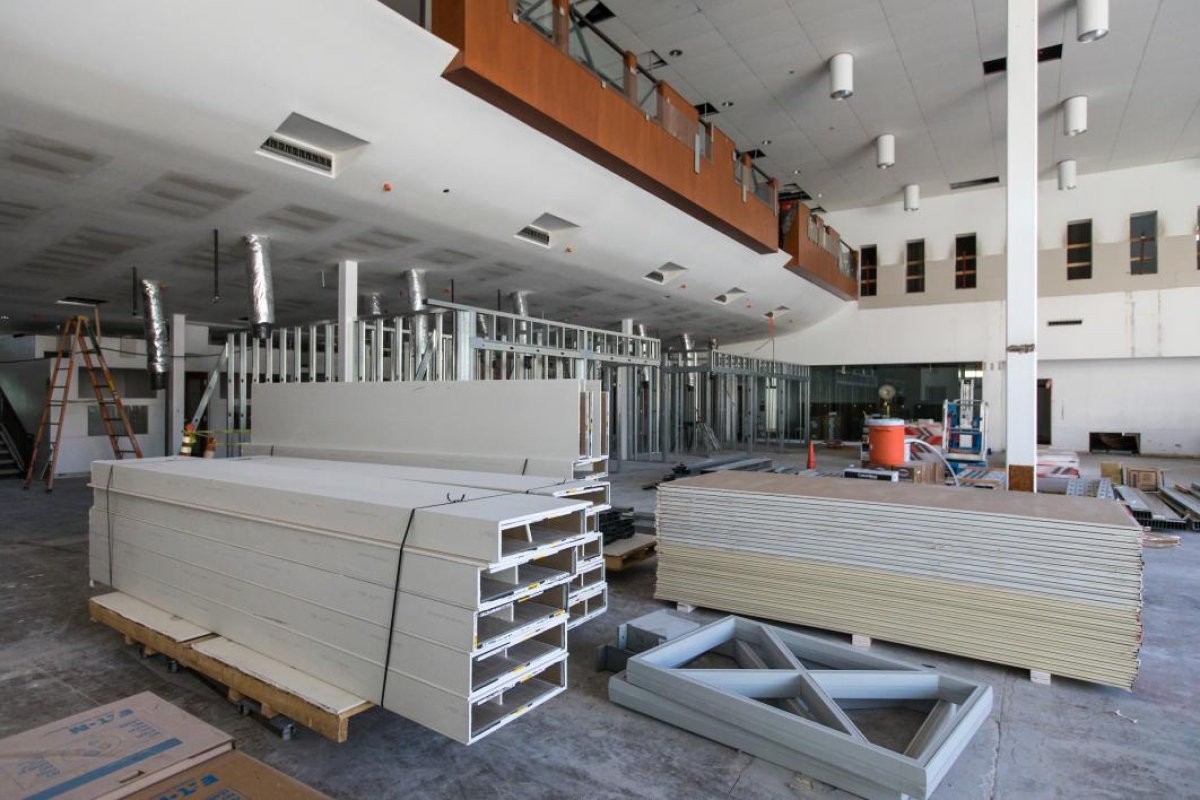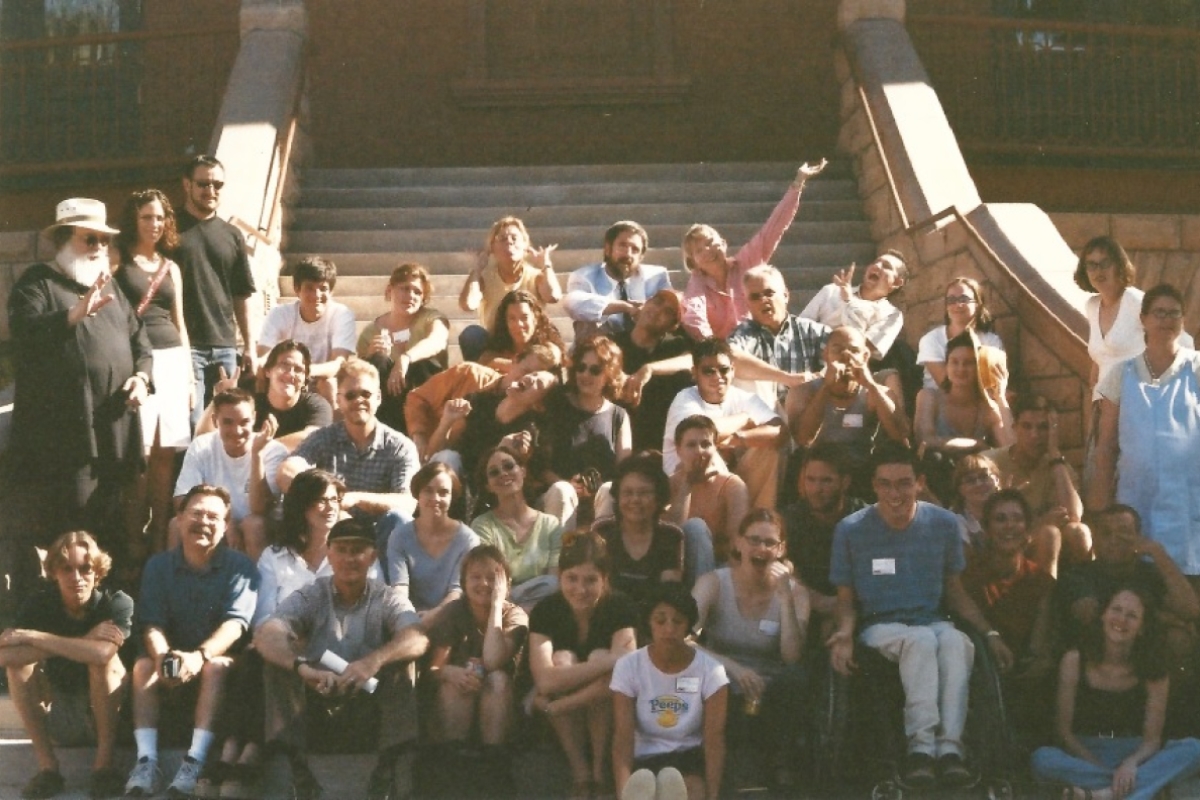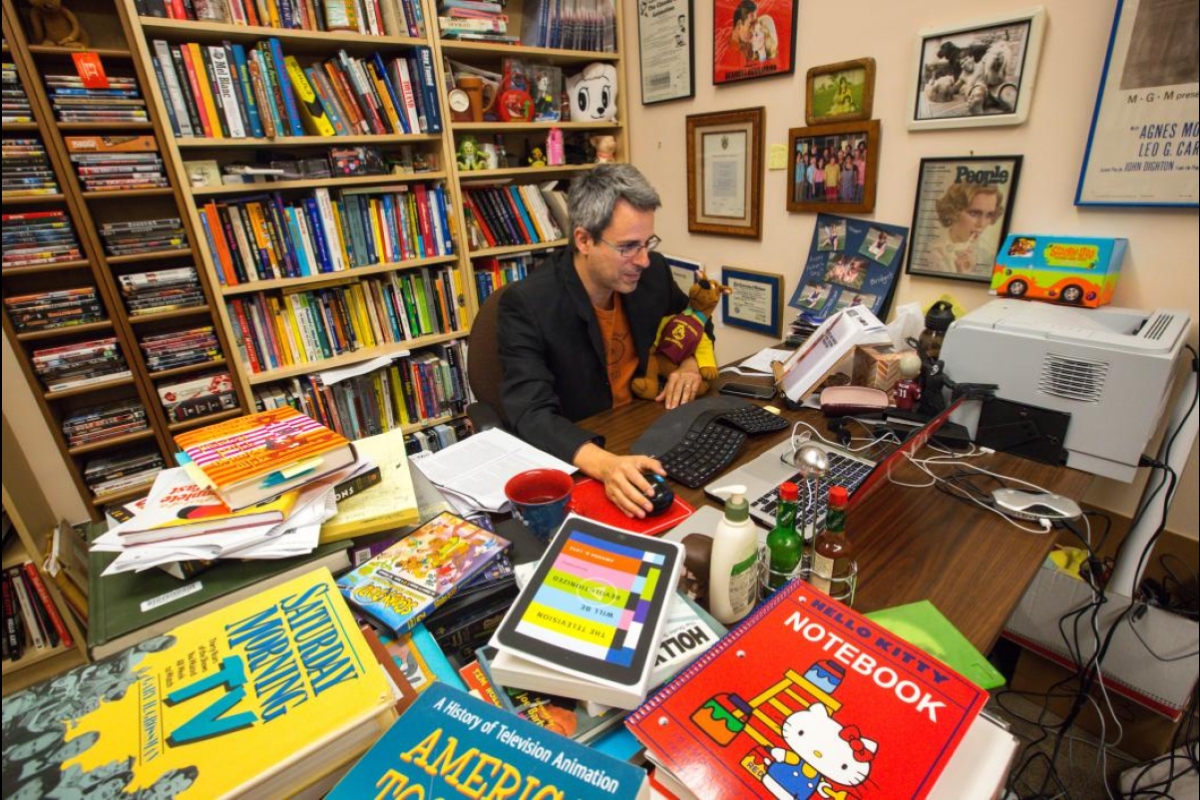Literature is rife with interpretations of home: There’s no place like it in the “Wizard of Oz”; the land Scarlett O’Hara lives on in “Gone with the Wind” is like her mother; Jay Gatsby’s is an opulent façade disguising an empty man.
For lit lovers at Arizona State University, home recently became Ross-Blakley Hall.
A unit of the College of Liberal Arts and Sciences, the English Department’s move from the G. Homer Durham Language and Literature building on the north end of campus to the newly renovated, former law library was one of necessity and opportunity, CLAS Dean Patrick Kenney said. It will be joined in its new location on the south end of campus by the rest of the CLAS faculty — from such departments as life sciences, economics and geography — in Armstrong Hall, just north of Ross-Blakley.
“The idea behind the move was twofold,” Kenney said. “One, to create a CLAS campus, because we don’t have that kind of identity — engineering and business both have that kind of identity, where everything is located in one space but we’ve never had that. And second, to have a more updated space to showcase humanities.”
The Institute for Humanities Research will also share space with the Department of English, on the first floor of Ross-Blakley Hall.
For some, the move has been bittersweet. Graduate program manager Sheila Luna spent 20 years in her office at the Language and Literature building. At first, she was hesitant at the idea of moving after all those years. Then she saw the new space.
“It was like, ‘Oh wow, this is really nice,’ ” Luna said.
On a recent afternoon in August, she and Glendolyn Neumann, who works in business administration for the English Department, took a quick break from moving to admire the architecture and abundant daylight in the entryway of Ross-Blakley Hall while construction workers put the final touches on drywall and flooring.
“It’s definitely more modern,” Neumann said. “And before, we were all spread out over campus. Now we have the chance to be in the same building at once, which is exciting.”
The space maintains its original three stories, but gone are the rows of towering stacks crammed with legal texts (the Sandra Day O'Connor College of Law moved to the Downtown Phoenix campus last summer). They’ve been replaced by open floor plans divided into “neighborhoods” made up of shared desk spaces for teaching assistants and faculty associates; more private, enclosed enclaves for small meetings and student consultations; and fixed offices for more established faculty and staff.
Because the building is going to have so many different users — including faculty, staff, alumni, visitors, students and collaborators — facility space plan coordinator Kent Jones said that he and his team tried to create areas more conducive to collaboration. Special attention was given to ensure there was more natural light in public areas and there were informal places where people could meet and strike up a conversation.
“Part of the idea behind the design of the space was to get people out of their office,” he said. “We’re hoping there will be some creative collisions.”
Aesthetically the building is stunning. Floor-to-ceiling windows drench the first floor in natural light, and exposed ductwork gives the space a modern, industrial feel. Unexpected angles, rounded corners and high, arched ceilings keep things interesting. A peculiar stairway, original to the building, juts out into nothingness at one end, overlooking the first floor. Jones and his team call it the Titanic staircase because it comes to a point at the overhanging portion, not unlike the bow of the boat where Jack and Rose shared that memorable cinematic moment.
There’s also a large conference room with an 80-inch TV screen; a windowless seminar room perfect for movie screenings; a computer lab; a reading room; gender-neutral bathrooms; and Canon print stations at each elevator bank.
Faculty and staff had been preparing for the move months in advance, clearing out decades-worth of artifacts from their offices in the Language and Literature building. Among the boxes piled in Professor Jim Blasingame’s office was an old leather wingback chair filled with “peanut crumbles.”
“It belonged to two professors before me, and one of them ate peanuts in it,” he said with a grin. Blasingame found bits of the snack food in cracks and crevices of the chair for years.
Karla Elling, former Creative Writing Program manager and an English alum herself, may have been there when those peanut crumbles first found their way into the chair. She came to ASU as a freshman in 1961, when the English Department was still located in the University Club.
“The first poetry reading I heard at ASU was in 1961 — Robert Frost,” Elling said.
Later, as part of her position as program manager, she would welcome writers including Robert Bly, John Updike and Ken Kesey to speak at department events. She watched as “every day new ideas and possibilities popped up … with the brilliant graduate students and stellar faculty — Alberto Ríos, Norman Dubie, Rita Dove, Peggy Shumaker, T.M. McNally, Ron Carlson, Jay Boyer, Beckian Fritz Goldberg, Jeannine Savard, Jewell Parker Rhodes, Melissa Pritchard, Cynthia Hogue, Sally Ball, Pete Turchi.”
Then, in 1964, “The English Department spread out from the old red brick building to the six-story Language and Literature building, the Piper Center and into collaborations with other wildly disparate areas,” Elling said, “various art disciplines at Herberger, palliative care at Mayo Clinic … Alzheimer’s units in the Valley, Arizona high schools and grade schools. If we could dream it, we could do it. The English Department, wherever housed, is a whole life, a window to the world.”
More Arts, humanities and education
ASU FIDM students to see their designs on the runway at Uncertainty Fashion Showcase
Nola Hill is perfecting every stitch of her fashion design collection, which she started conceptualizing last summer.She is among 30 ASU FIDM fashion design students who have been working late into…

ASU+GSV Summit brings experts together to discuss innovation in education
This week, Arizona State University President Michael Crow and other university leadership joined education and learning experts from around the globe at the ASU+GSV education technology summit in…

ASU professor's project helps students learn complex topics
One of Arizona State University’s top professors is using her signature research project to improve how college students learn science, technology, engineering, math and medicine.Micki Chi, who is a…


